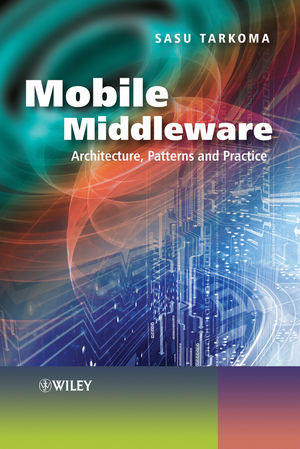

Most ebook files are in PDF format, so you can easily read them using various software such as Foxit Reader or directly on the Google Chrome browser.
Some ebook files are released by publishers in other formats such as .awz, .mobi, .epub, .fb2, etc. You may need to install specific software to read these formats on mobile/PC, such as Calibre.
Please read the tutorial at this link: https://ebookbell.com/faq
We offer FREE conversion to the popular formats you request; however, this may take some time. Therefore, right after payment, please email us, and we will try to provide the service as quickly as possible.
For some exceptional file formats or broken links (if any), please refrain from opening any disputes. Instead, email us first, and we will try to assist within a maximum of 6 hours.
EbookBell Team

5.0
90 reviewsMobile Middleware: Architecture, Patterns and Practiceprovides a comprehensive overview of mobile middleware technology. The focus is on understanding the key design and architectural patterns, middleware layering, data presentation, specific technological solutions, and standardization. The author addresses current state of the art systems including Symbian, Java 2 Micro Edition, W3C technologies and many others, and features a chapter on widely deployed middleware systems. Additionally, the book includes a summary of relevant mobile middleware technologies, giving the reader an insight into middleware architecture design and well-known, useful design patterns. Several case studies are included in order to demonstrate how the presented patterns, solutions, and architectures are applied in practice. The case studies pertain to mobile service platforms, mobile XML processing, thin clients, rich clients, and mobile servers. Chapters on Architectures and Platforms, Mobile Messaging, Publish/Subscribe, Data Synchronization and Security are also included.
Key Features:
This book serves as an invaluable guide to systems architects, researchers, and developers. It will also be of interest to graduate and undergraduate students studying computer science (distributed systems, computer networks).Content:
Chapter 1 Introduction (pages 1–13):
Chapter 2 Architectures and Platforms (pages 15–65):
Chapter 3 Support Technologies (pages 67–102):
Chapter 4 Principles and Patterns (pages 103–135):
Chapter 5 Interoperability and Standards (pages 137–161):
Chapter 6 Mobile Messaging (pages 163–198):
Chapter 7 Publish/Subscribe (pages 199–223):
Chapter 8 Data Synchronization (pages 225–239):
Chapter 9 Security (pages 241–269):
Chapter 10 Application and Service Case Studies (pages 271–297):
Chapter 11 Conclusions (pages 299–302):